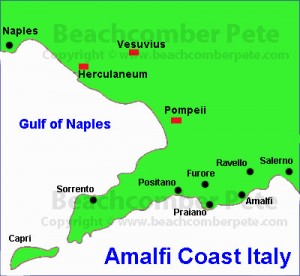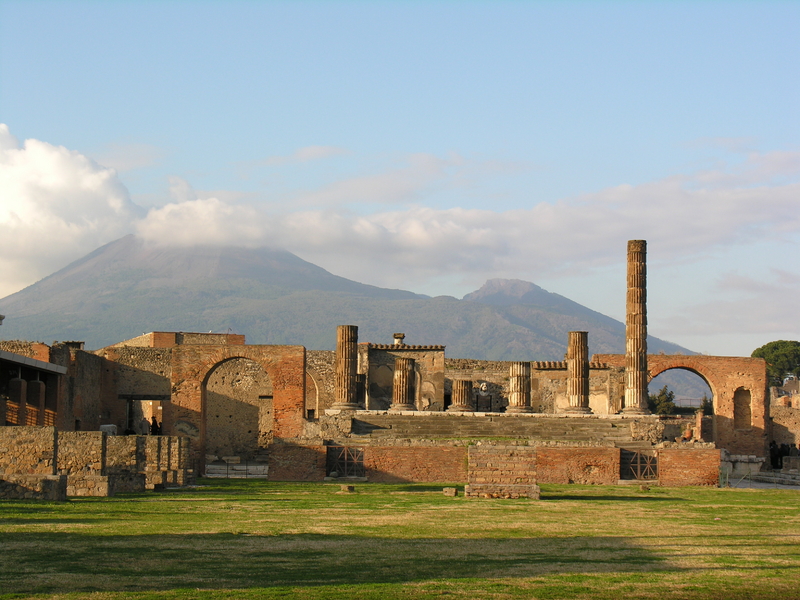In the shadow of Mount Vesuvius not far from Naples lay the world famous ruins of Pompeii. Nearby is a little known city that also perished when the mighty Mount Vesuvius erupted that fateful day, August 24, 79 AD. Once a haven of the affluent of Roman culture, Herculaneum was a thriving city with all the modern luxury of its day.
Herculaneum had been buried under many feet of volcanic rubble until it was discovered by chance during the early part of the 18th century. Workers were digging to lay the foundation for a well when they discovered the site. Toward the latter part of the century the enormity of what had been unearthed was realized and serious excavation of the site began.
 Herculaneum is far better preserved than its more famous neighbor Pompeii. The super heated volcanic mud flows from Vesuvius’s eruption flooded the city in layers, instantly carbonizing much of the wood used to build homes and other structures throughout the city, preserving them until this day. There was very little damage to Herculaneum unlike the fate of Pompeii, which suffered many collapsed buildings due to the crushing weight of the ash that fell on it. Although much of Herculaneum still remains buried, what has been excavated is truly remarkable in the amount of detail and vivid color that in some cases looks much as most likely did the day that Vesuvius erupted.
Herculaneum is far better preserved than its more famous neighbor Pompeii. The super heated volcanic mud flows from Vesuvius’s eruption flooded the city in layers, instantly carbonizing much of the wood used to build homes and other structures throughout the city, preserving them until this day. There was very little damage to Herculaneum unlike the fate of Pompeii, which suffered many collapsed buildings due to the crushing weight of the ash that fell on it. Although much of Herculaneum still remains buried, what has been excavated is truly remarkable in the amount of detail and vivid color that in some cases looks much as most likely did the day that Vesuvius erupted.
Many of the buildings contain beautiful frescoes and mosaics on both walls and floors, many still retaining their original vivid colors. Upper stories on quite a few of the buildings are still intact as well offering a glimpse of how the people of ancient Rome lived. Also discovered was a complex water distribution system that was necessary to supply the public and private baths, water fountains, shops and an elaborate sanitation system. There were many public baths in Herculaneum, a symbol of the affluence of a Roman city. Adorned with lavish decor including colorful mosaics, beautiful frescoes, marble fountains and artfully tiled floors, the public baths were a part of daily life in first century Rome.
One of the most amazing finds in Herculaneum is the library at Villa of the Papyri, the only library of the era known to still exist. Due to the direction of the volcanic flows from Mount Vesuvius, the library survived as did much of its contents. Many scrolls were recovered and though most were badly damaged, a few survived relatively intact and archaeologists have been able to unroll and scan them. They are now housed at the National Library in Naples.
|
Amalfi Coast, Italy |
|||
















